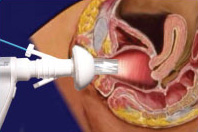
Photo from wikipedia
Abstract The present study aimed to assess the effect of removing an indwelling urinary catheter at different times on urinary retention and urinary infection in patients undergoing gynecologic surgery. Electronic… Click to show full abstract
Abstract The present study aimed to assess the effect of removing an indwelling urinary catheter at different times on urinary retention and urinary infection in patients undergoing gynecologic surgery. Electronic databases including PubMed, EMbase, the Cochrane Central Register of Controlled Trials, and Ovid from inception to June 2018 were searched. Relevant randomized controlled trials (RCTs) of removal the indwelling urinary catheter in different time were included. Eight RCTs were included. Data were analyzed by RevMan 5.3 version. There was significant difference in urinary retention (relative risk [RR] 2.46, 95% confidence intervals [CIs] 1.10–5.53), P = .03) between the ≤6 hours and >6 hours indwelling urinary catheter removal groups, while no significant differences were found in the gynecologic surgery excluded the vaginal surgery group and vaginal surgery group. When compared with >6 hours indwelling urinary catheter removal group, the incidence of urinary infection was significantly reduced at the ≤6 hours removal group (RR = 0.66, 95% CI 0.48–0.89, P = .007). The urinary catheter removal time at ≤6 hours also significantly reduced the incidence of urinary retention (RR = 5.06, 95%CI 1.74–14.69, P = .003), and did not statistically increase the incidence of urinary infection (RR = 0.30, 95%CI 0.08 to 1.20, P = .09), compared with immediate urinary catheter removal after surgery. Removal time of the urinary catheter at ≤6 hours postoperatively seems to be more beneficial than immediate or >6 hours for patients undergoing gynecologic surgery which excluded the vaginal surgery.
Journal Title: Medicine
Year Published: 2020
Link to full text (if available)
Share on Social Media: Sign Up to like & get
recommendations!